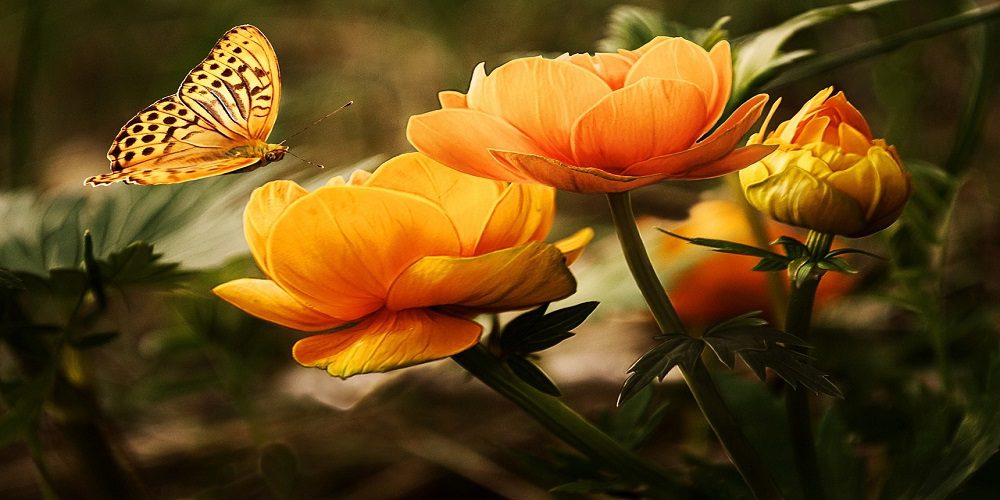Welcome to a visual journey through the mesmerizing transformation of nature’s palette! As we bid farewell to crisp spring blossoms and welcome the icy embrace of winter, there is something undeniably magical about witnessing Mother Earth adorn herself in an array of breathtaking colors. Join us as we embark on an awe-inspiring photographic expedition, capturing the ever-changing hues that dance across landscapes from season to season.
Introduction
Nature is a constant source of wonder and inspiration for many people. One of the most captivating aspects of nature is its ability to change colors throughout the year. From vibrant blooms in the spring to fiery foliage in the autumn, nature’s ever-changing palette never fails to amaze us.
The changing colors of nature are a result of the changing seasons and environmental factors such as temperature, light, and moisture. Each season brings its own unique color scheme, creating a symphony of hues that transform the landscape.
Spring Blossoms:
Spring is a season of rebirth and renewal, and one of the most beautiful aspects of this time of year is the vibrant colors of budding flowers and blooming trees. As a photographer, capturing these colorful moments can be both challenging and rewarding. Here are some tips for capturing the essence of spring blossoms in your photography.
1. Use Natural Light: The best way to capture the true colors of spring blooms is to take advantage of natural light. Avoid harsh midday sun and instead opt for early morning or late afternoon when the light is softer and more flattering. This will also create a warm glow on your subjects, bringing out their vibrant colors even more.
2. Get Up Close: Spring blossoms are delicate and intricate, so getting up close to them can reveal stunning details that may not be visible from a distance. Use a macro lens or extension tubes to capture the tiny details, like dew drops on petals or patterns within the flower itself.
3. Play with Perspective: Experiment with different angles and perspectives when photographing spring blossoms. Get down low to capture them from ground level, or shoot from above for an aerial view. You can also try shooting through other elements, like trees or leaves, to add depth and interest to your photos.
4. Add Some Contrast: While pastel hues are often associated with spring flowers, adding some contrast can make your images stand out even more. Look for complementary colors in nature, such as purple flowers against a blue sky or yellow blooms against green foliage.
5. Incorporate People into Your Shots: Spring blossoms make for great backdrops in portraits, so don’t be afraid to include people in your shots too! They can add scale and perspective while also adding an element of life to your photos.
6. Play with Composition: Don’t stick to traditional composition rules when photographing spring blossoms; have fun with it! Experiment with asymmetrical compositions by placing your subject off-center, or try a wide-angle shot to capture the entire landscape.
Summer Sunsets:
Summer sunsets are a favorite subject for many photographers, as the warm hues of the setting sun can create stunning and breathtaking images. Capturing these vibrant colors requires some specific techniques and preparation, which we will explore in this section.
First and foremost, timing is crucial when it comes to photographing summer sunsets. The best time to capture these warm hues is during the “golden hour,” which is the hour before sunset. This is when the light from the sun is soft and golden, creating a beautiful glow on everything it touches. It’s also essential to arrive at your desired location early to scope out potential compositions and make any necessary adjustments before the perfect light appears.
When it comes to composition, there are several elements you can incorporate to enhance your sunset images. Including silhouettes of trees or buildings can add depth and interest to your photos. You can also use leading lines such as roads or fences to guide the viewer’s eye towards the setting sun.
One technique that can create stunning results is using long exposures. By slowing down your shutter speed, you can capture the movement of clouds or water while still maintaining detail in your foreground elements. This technique works particularly well during summer sunsets, where there may be some clouds in the sky.
Another important factor to consider when photographing summer sunsets is white balance. Since sunlight has a warm tone, it’s essential to set your white balance accordingly; otherwise, you may end up with cool-toned images that don’t accurately represent the warmth of a sunset. Experiment with different white balance settings until you find one that captures the tones accurately.
Autumn Leaves:
Autumn is a beautiful season filled with warm hues of reds, oranges, and yellows as the leaves change color. It’s a time when nature puts on its most stunning display, making it the perfect opportunity for photographers to capture the essence of fall foliage. Whether you’re an amateur or professional photographer, here are some tips on how to capture the stunning reds, oranges, and yellows of autumn leaves.
1. Utilize Natural Light: Autumn weather can be unpredictable, but natural light is essential for capturing vibrant colors in your photos. Try to shoot during golden hour, which is an hour after sunrise and before sunset when the lighting is soft and warm. This will enhance the colors of the leaves and create a dreamy effect in your photographs.
2. Look for Unique Compositions: While trees full of colorful leaves may seem like an obvious subject to photograph in autumn, try to look beyond that for unique compositions. Use leading lines such as paths or roads lined with trees to draw attention to your subject. You can also experiment with different angles and perspectives by shooting from above or below.
3. Use a Tripod: As days get shorter during autumn, there’s less natural light available for photography. Therefore it’s important to use a tripod to stabilize your camera and prevent blurry photos due to low light conditions.
4.Capture Details: Don’t just focus on capturing entire landscapes; take some time to zoom in on individual leaves or clusters of leaves for close-up shots. This will bring out intricate details such as veins and textures that add an artistic touch to your photos.
5. Play with Depth of Field: Depth of field refers to the sharpness or blurriness of elements in your photo at various distances from the camera lens. Playing around with depth of field can add depth and dimension to your images by bringing certain elements into focus while blurring others out.
Winter Wonderland:
Winter is a magical season, especially for photographers. With the snowy landscapes and glowing holiday lights, it’s a dream come true for those looking to capture stunning images of nature’s changing colors. However, shooting in such conditions can also be challenging. From exposure issues to keeping yourself warm, here are some tips for capturing the winter wonderland with your camera.
1. Plan Ahead: The key to successful winter photography is planning ahead. Check the weather forecast and plan your shoot accordingly. Look for locations that have beautiful snow-covered landscapes or holiday light displays. Also, make sure to dress appropriately and pack all necessary gear, such as extra batteries and lens cloths.
2. Use a tripod: Winter means shorter days and longer nights, which results in less natural light for photography. To compensate for this, you may need to use longer shutter speeds to allow more light into your camera sensor. This can result in blurry images if you’re not using a tripod.
3. Experiment with Exposure: Shooting in the snow or around holiday lights can throw off your camera’s exposure metering system due to the brightness of these elements. To avoid overexposed or underexposed images, try using manual mode and adjusting your aperture and shutter speed accordingly.
4. Capture Different Angles: Snowy landscapes offer endless possibilities for unique shots from different angles. Try getting low or high angles to add depth and interest to your photos.
5. Focus on Details: Don’t just focus on grand views; pay attention to small details as well. Snowflakes on branches or icicles hanging from roofs can make for great subjects in winter photography.
6. Use Reflective Surfaces: Look out for reflective surfaces like ice or puddles of water that can add an interesting element to your photos by creating reflections of the surroundings.
7. Keep Yourself Warm: It’s easy to get so caught up in taking photographs that you forget about staying warm in the winter weather. Dress in layers and use hand warmers to keep yourself comfortable and focused on your shoot.
Year-round Inspiration: Finding Beauty in Nature During Every Season
Nature is a constant source of inspiration and beauty, no matter the season. From the vibrant colors of spring blossoms to the serene white landscapes of winter, there is always something to capture and admire in nature’s ever-changing palette. Each season brings its own unique charm and photography opportunities, allowing us to appreciate and connect with our natural surroundings throughout the year.
Spring marks the beginning of new life and growth, making it a perfect time for photographing nature. The blooming flowers, budding trees, and buzzing insects offer endless possibilities for capturing vibrant and dynamic images. Take advantage of the soft lighting during sunrise or sunset to add a dreamy quality to your photos. Focus on details such as delicate petals or emerging leaves for close-up shots that showcase the beauty of new beginnings.
As we move into summer, nature truly comes alive with lush greenery and warm sunlight. This season offers an abundance of wildlife photography opportunities as animals are more active in search of food and water. Try experimenting with different perspectives by getting down low or using a telephoto lens to capture intimate shots from afar. The bright colors and textures found in nature during this season can also make for stunning abstract photos.
Autumn brings about one of nature’s most breathtaking displays – fall foliage. As leaves change color and create a picturesque landscape, it’s hard not to feel inspired by the warmth and coziness this season radiates. Look for contrast between brightly colored leaves against a clear blue sky or capture reflections on still water for striking compositions. Don’t be afraid to get creative with movement by incorporating falling leaves or wind-blown branches into your shots.
Winter transforms our surroundings into a magical wonderland filled with crisp air, snow-covered landscapes, and bare trees waiting patiently for spring’s arrival. This season may seem challenging for outdoor photography due to harsh weather conditions but can yield some truly stunning results if approached correctly. Use contrasting elements such as dark tree branches against a bright white background to create dramatic images. Experiment with long exposures to capture the movement of falling snow or try capturing close-up shots of intricate ice formations.
Conclusion:
As the seasons change and nature’s colors shift, there is no better time to pick up your camera and capture the beauty around you. From the vibrant hues of spring blossoms to the serene white landscapes of winter, photographing nature’s changing colors can be a fulfilling and rewarding experience.



































